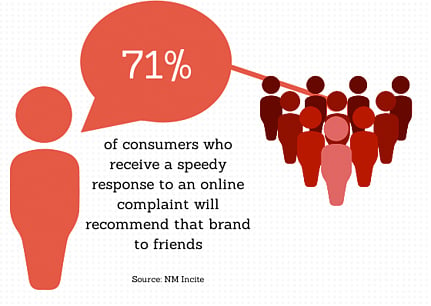The High Pressure (and Amazing Benefits) of Customer Engagement
The following is a true story:
In a previous life, before my days at Access Development, I consulted with a number of small businesses on marketing strategies. One of my clients was a managed IT firm that focused on end-to-end outsourced technology for small businesses. Exciting stuff, but a very well run business that just needed some help taking the next step.
We began executing on a two-pronged plan - lead gen on one side, customer retention on the other. We brought in new clients, then focused on keeping them through regular engagement and open dialog channels - we invited customers to offer feedback anywhere, anytime, on any communication channel.
Much to the client's surprise, their customers took advantage of these channels. Frequently. And my clients freaked out.
"I'm not sure this is working out," they said. "We're having to expand too much to service the customers. We don't like having to manage this many people."
This is where the loyalty marketing professionals all collectively slap their foreheads.
My client learned a tough lesson during that campaign: Customer centricity and growth required them to step up their game. It means more work, or hiring more people to service the various needs of accounts. It means more pressure to meet their expectations.
 Even though we all know it costs 6-7 times more to acquire a new customer (or thereabout) than to retain an existing one, most companies are comfortable with that because it doesn't require additional internal expense. Meanwhile, they're missing out on the potential 100% increase in the value of a company that comes from a 5% increase in retention. Or the fact that repeat customers spend 33% more than new customers.
Even though we all know it costs 6-7 times more to acquire a new customer (or thereabout) than to retain an existing one, most companies are comfortable with that because it doesn't require additional internal expense. Meanwhile, they're missing out on the potential 100% increase in the value of a company that comes from a 5% increase in retention. Or the fact that repeat customers spend 33% more than new customers.
They wanted to sell a product, do their jobs well, and let the customer be content with their purchase. A "set it and forget it" business. Which would work in a perfect world, but in reality, people have lots of options and short attention spans. If companies don't capture and keep their attention, they're going to go away.
Higher customer engagement means higher expectations. There will be more customer service issues being vocalized, more questions being asked, but smart businesses know that every interaction is a chance to earn loyalty. More customer loyalty means more revenue, often exponentially.
There's a bonus too: customers who have a great experience now have audiences with which to share their joy. 71% of people who received a speedy and effective response to an online complaint shared their happiness with their social networks. So in a way, a solid customer engagement and retention strategy is also a customer acquisition strategy.
Engaged customers will be loyal customers, which are the most profitable customers. So why not get out there, raise customer expectations and fight to keep them? Just a hunch, but I'm betting you'll handle it better than my previous client did.
(image via)
Topics: Customer Engagement, Customer Incentives, Access Development, customer service, customer retention, customer loyalty
Written by: Brandon Carter












Share your Comment.